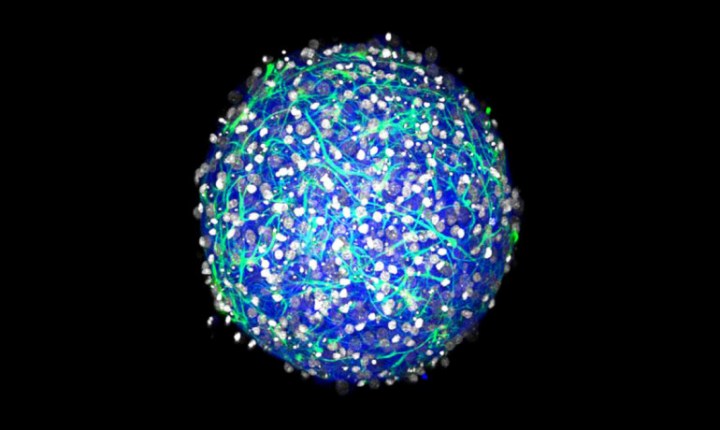
To manufacture these brains, the team reported it needs just one small living sample of tissue from a single rodent to produce literally thousands of capable specimens. Measuring in at just a third of a millimeter in diameter, Brown creates each mini brain by isolating and concentrating a series of desired cells from the living tissue before refining the samples to seed its cultures. If you’re left scratching your head after reading that last sentence, co-lead author and Brown PhD graduate Yu-Ting Dingle says the process is actually quite easy:
“The materials are easy to get and the mini-brains are simple to make,” says Dingle. “We could allow all kinds of labs to do this research.”
Though Brown’s mini-brains don’t represent the most advanced recreation of a central nervous system with working cell cultures, it is the most cost-effective and efficient method to date. In addition to the research’s fixed costs, those interested in securing a mini-brain for their own studies need to pony up a measly $0.25. Considering each brain requires just a few weeks for creation — spheres of brain tissue form after one day with complex 3D neural networks forming in two to three weeks — it’s not hard to see just how useful Brown’s work could be.
“We knew it was a relatively high-throughput system, but even we were surprised at the low cost per mini-brain when we computed it,” says the study’s senior author, Diane Hoffman-Kim.
Aside from not possessing the capability to produce sentient thoughts, each mini-brain boasts the ability to produce electrical systems which come from their own neural network connections. Moreover, the brains also contain inhibitory and excitatory neurons which fire and form synaptic connections, a density of a few hundred thousand cells per cubic millimeter, and the ability to create their own extracellular matrix. Needless to say, these are damn close to the real thing.
With research recently concluding, as well as the fact the paper just published at the end of September, these brains have yet to make a widespread appearance in labs across the country. However, judging by the sheer amount of positive research these mini-brains represent, it likely won’t be long before Brown starts raking in those quarters from droves of interested scientists.
Editors' Recommendations
- Researchers have simulated a virtual universe, and you can download it for free
- Doctors are fighting brain cancer by growing mini-brains
- Researchers develop flexible brain-machine interface for controlling wheelchairs
- Facebook’s ‘brain-computer interface’ could let you type with your mind
- Implant restores sight in blind patients by beaming images directly to the brain



